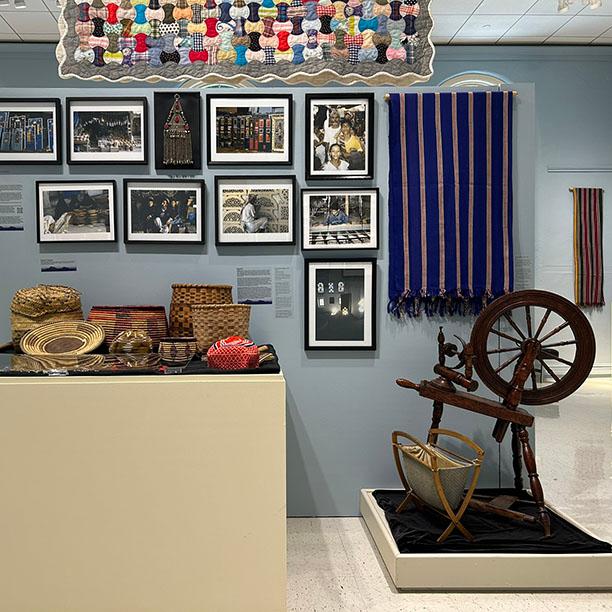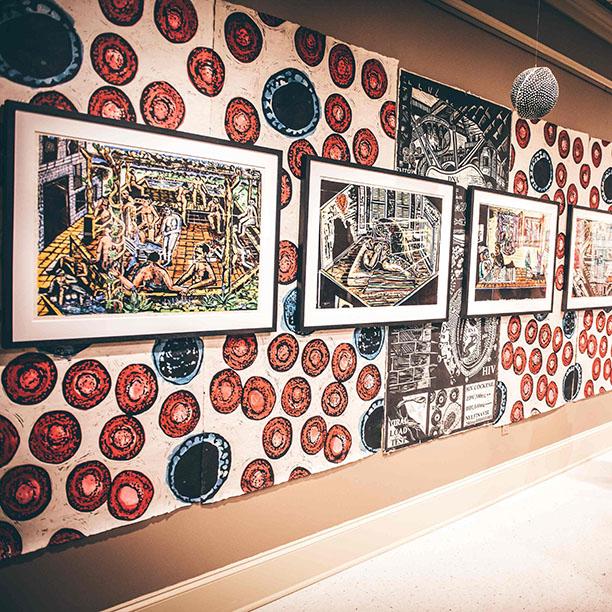Reece Museum collections portal offers viewing of extensive holdings
Above: These items are part of the Reece Museum's "Embodying Culture: Women in Appalachia" exhibit.
Did you know that while East Tennessee State University’s Reece Museum, or the B. Carroll Reece Memorial Museum and Archives, officially opened in 1965, its collection of art and artifacts actually started in 1928?
According to Savannah Bennett, collections manager for the museum, the collection began that year as a class history project.
Items continued to be donated through the years, and when the Reece Museum opened in 1965 in memory of the late First District Congressman Brazilla Carroll Reece, most of these became part of the museum’s permanent collection.
Today, the Reece Museum is a part of ETSU’s Center of Excellence for Appalachian Studies and Services, and the museum continues to receive donations of significant art and objects.


The public is invited to view items in the Reece Museum’s permanent collection through its online collections portal. More than 1,700 artifacts are included for users to view and read about, and more are added each week.
Patrons may view items from the early days of the collection, such as this cotton quilt dating to the 1800s. Mid-20th century items include this photograph of the museum’s namesake with one of his many elephants, one of more than 450 pieces of elephant statuary housed in the museum that came from the personal collections of both Reece and later First District Congressman James H. Quillen (both were Republicans).
Some of the more recent additions to the Reece Museum’s holdings include prints of the 100 works by Salvador Dali illustrating Dante’s “Divine Comedy,” donated by ETSU alumnus Dr. Frank Barham; a collection of works created and collected by the late Sammie L. Nicely, an African American Appalachian artist, art collector and art educator; and a collection of works reflecting the experiences of local artists during the COVID-19 pandemic.
The online collections portal may be searched by keyword, or users may click the buttons to access specific subcollections, such as “Appalachian Art” or “Music and Instruments,” or even random images.
While items in the permanent collection are carefully stored and not readily available for public viewing all the time, the Reece Museum does curate special exhibits from its holdings on a regular basis. Two such exhibits will open this July – one centering on the artistic legacy of self-taught Tennessee artist Paul Lancaster (1930-2019) and another that will showcase historic textiles.
The Reece Museum is open to visitors Monday-Friday from 9 a.m.-4:30 p.m., and admission is free. Current exhibits include “Ballet in Appalachia: 75 Years with Bristol Ballet” through June 28, “Embodying Culture: Women in Appalachia” through July 4 and “Appalachia and Yemen: Living on Mountain Places” through July 31.
East Tennessee State University was founded in 1911 with a singular mission: to improve the quality of life for people in the region and beyond. Through its world-class health sciences programs and interprofessional approach to health care education, ETSU is a highly respected leader in rural health research and practices. The university also boasts nationally ranked programs in the arts, technology, computing, and media studies. ETSU serves approximately 14,000 students each year and is ranked among the top 10 percent of colleges in the nation for students graduating with the least amount of debt.
Stay in Touch
Follow ETSU on Social
 Water Leak Investigation and ...
Water Leak Investigation and ...